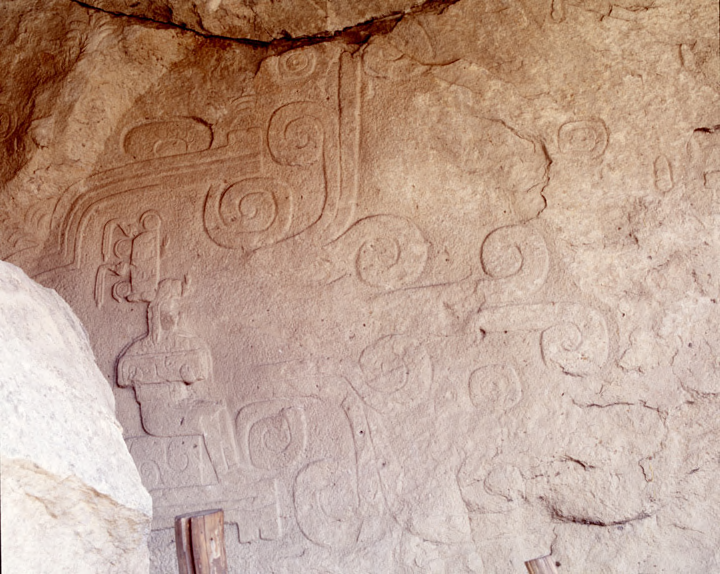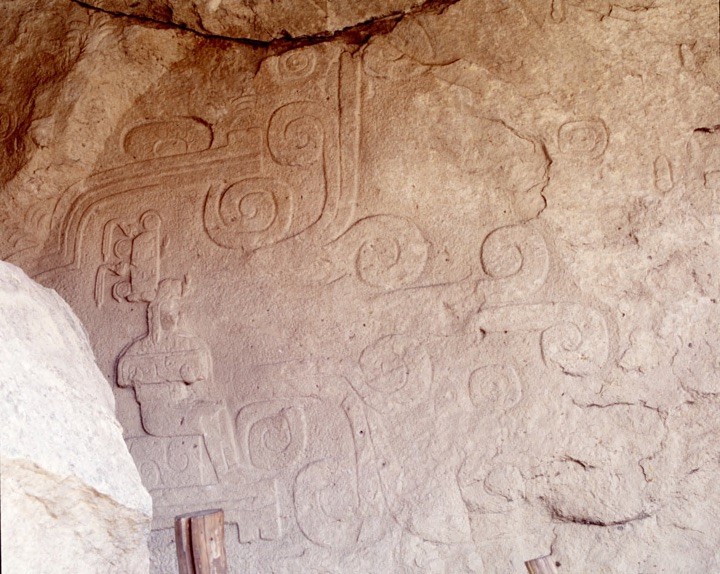Chalcatzingo is one of the most important pre-Hispanic settlements, as shown by the iconographic elements depicted on the sacred stones of Cerro Ancho, also known as Cerro de la Cantera ("Quarry Hill").
Monument 1, colloquially known as “The King” and officially as “The Giver of Water,” is the site’s most emblematic depiction. Discovered in the early 1930s thanks to a natural event known to the locals as a “water snake” (waterspout), The King has been an enigmatic character ever since. In fact, specialists started studying it even before the Olmecs in Mesoamerica had begun to be defined. This carving shows us the water cycle in its mythical representation, with naturalistic and geometrical elements that refer to clouds, raindrops, water vapor or speech scrolls, together with exotic birds and plants, which depict the cave this character emerges from. Also of note is the eye with a (strongly Olmec) flaming eyebrow and the double horizontal scroll, a repeated iconographic element which can be seen in the vast majority of bas-reliefs carved into the side of Cerro Ancho, as well as on some stelae and altars.
The King therefore represents the synthesis of a discourse developed through the other bas-reliefs, from Monument 5 (“Creation”), which exalts the birth or emergence of man, to Monument 2 (“The Fertility Procession”), in which human characters wear the dress and masks of the zoomorphic mythical beings depicted in previous carvings, including mythical representations of felines who wage a struggle for domination over human beings. This discourse occurs during the arrival of different ethnic groups from both the Gulf coast and the center of Mexico, whose worldview was integrated into the one held by the local inhabitants of the time.
In this way, The King bears the entirety of the symbolic weight which is partially expressed in each of the monuments that come before it on the slopes of Cerro Ancho. This is the oldest Olmec carving on the Central Mexican Plateau, one where we can read the icons that will become central to the Mesoamerican worldview in such distant periods as the Postclassic.








